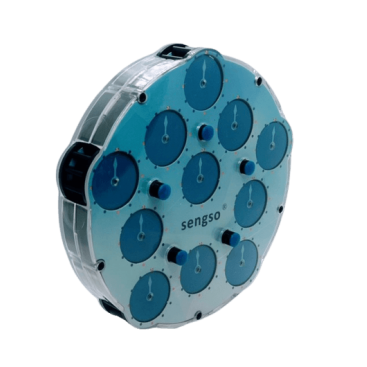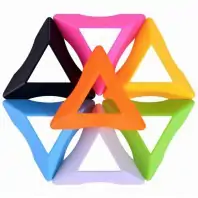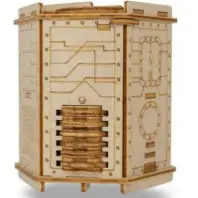MAGIC CLOCK SENGSHO 5 M
MCLOCK5M
New product
Magic Clock is a mechanical puzzle, which Sengsho launches in a new version, this time Magnetic with 11 clocks on each side, and 5 rotating gears.
Being magnetic makes turning easier and safer.
Magic Clock is a mechanical puzzle invented and patented by Christopher C. Wiggs and Christopher J. Taylor. It was first marketed in 1988.
With this new model we present a more complicated, two-sided puzzle clock, each side presenting 11 clocks to the puzzle. There are 5 wheels, one at each corner of the puzzle, each allowing the corresponding corner clock to rotate directly.
There are also 5 buttons that straddle both sides of the puzzle; each button arranged in such a way that if it is "in" on one side it is "out" on the other. The state of each button (in or out) determines whether the adjacent corner clock is mechanically connected to the other three adjacent clocks on the front side or on the back side: thus the configuration of the buttons determines which sets of clocks can be activated simultaneously by rotating an appropriate wheel.
The aim of the puzzle is to set all the clocks from nine to twelve (upwards) on both sides of the puzzle simultaneously.
Actually, it is very easy to solve this puzzle. One reason for this is that unlike (for example) the 3X3 Cube, the clock is a commutative puzzle: the order in which the operations are performed does not matter. (This is true as long as we understand "operation" in the sense of an action of "adjusting buttons and then spinning a wheel" - of course individual button moves do not commute with wheel moves. ) Thus a complete mathematical solution can be obtained merely using linear algebra techniques without involving the group theory issue that is often required in sequential motion puzzles.
Magic Clock is suitable for official competitions. Get one and you won't stop playing until you solve it.
Weight : 147 gr
Size : 123 ×123 ×22 mm







